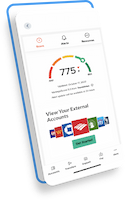Starting a business often requires capital, whether you’re launching a home-based side hustle or full-blown startup. Saving up for it might be tough if you’re on a tight budget. Venture capital funding might be more complex than you need. Getting a loan might be difficult if you’re brand new.
Consider crowdfunding your business to fill your financial needs by tapping into your existing network and audience. The following are some tips that may help get a crowdfunding campaign going for your small business.
1. Choose a Crowdfunding Platform
You may start by researching and selecting the platform that best meets your business’s needs. You may raise funds in a lot of ways, so consider your options to find the platform that’ll work best for you.
Some crowdfunding platforms for small businesses include:
- Kickstarter: The company is nearly synonymous with “crowdfunding,” as it was one of the earliest options. It’s dedicated to helping creative projects get the funding they need. Kickstart your project or product by raising funds for presales and other perks and prizes.
- Indiegogo: Launch a creative project, product or company through Indiegogo, and keep all your funds whether you reach your campaign goal or not. This is an alternative to Kickstarter if your launch can be successful with any amount of money.
- Wefunder: Let supporters invest in your company and own a little equity (without handing over voting rights to tons of people). Wefunder aggregates all crowdfunders into a single stakeholder, and investors don’t have to be accredited, as VCs (Venture Capitalists) typically do.
- IFundWomen: This platform offers crowdfunding, business grants and working capital loans to women-owned small businesses. It also offers free coaching and resources to help you make your crowdfunding campaign a success. You may set flexible rewards and goals, and you keep your funding whether you meet the goal or not. IFund Women also reinvests fees toward high-performing campaigns.
- Patreon: Build a steady stream of income for your creative, educational or content-based business. Patreon lets you create monthly subscription tiers and offer supporters access to content and other perks based on their subscription level. You may be able to use Patreon to build a community of supporters as you build out your main business, or make it the main revenue stream if your business centers on membership or content.
2. Set Your Fundraising Goal
Once you’ve chosen a platform, determine how much you want to raise during your initial campaign. You’ll have to consider:
- The minimum and maximum goals allowed on your chosen platform.
- The cost of producing and delivering your product or service, as well as perks.
- How much capital you want to stash in savings to carry your business to the next level after the campaign.
- How much of your earnings you’ll hand over in taxes and fees.
- The size and engagement of your audience and the market for your project.
3. Tell Your Network about It
Crowdfunding is essentially used as a marketing campaign. Your biggest task is getting the word out. Spreading the word to family, friends, colleagues and social media followers is an obvious first step, but you may want to reach beyond your immediate network and get creative to drum up interest.
You might hold live in-person or virtual events for your community to get them excited about the campaign. Drum up early success, and you might be able to get your campaign featured on the platform, as well.
Tap into networks and organizations in your community to connect with folks who might be interested in your campaign — local entrepreneurs (for equity funding), interest groups,
4. Budget for Taxes and Fees
Remember that you won’t get the full amount of the funds you’ve raised. Most platforms may take a cut (such as 5% to 12%), and the rest of the money could be income you’ll have to claim for tax purposes.
Consult with an accountant to make a plan for your tax bill. It’s likely that a lot of the money you raise through crowdfunding will go toward fulfilling orders and perks for supporters, and maybe even to cover some advertising costs from the campaign. But anything that’s left over as profit is income you’ll need to claim.
If you run a large fundraising campaign with funds that have significant tax implications, work with a financial advisor to help you find the best places to save and invest funds to manage your tax liability.
5. Use Your Funds Wisely
As you plan your crowdfunding campaign, make a plan for exactly how you’ll use the money you raise. A lot of it might go toward fulfilling orders and perks, but what will you do with the rest?
Depending on the amount, you may want to start a savings account to create a rainy day fund for your business and/or invest in low-risk securities to grow your assets further. You might also earmark funds for business growth through marketing, hiring, training or product development, depending on what your business needs are at this point.
Disclaimer:
This is not financial advice, nor should it constitute or be construed as instruction for any individual reader, or group of readers, to act or make a decision in any financial capacity. Seeking independent, professional consultation from a qualified and licensed expert is always the optimum avenue in making financial decisions.





